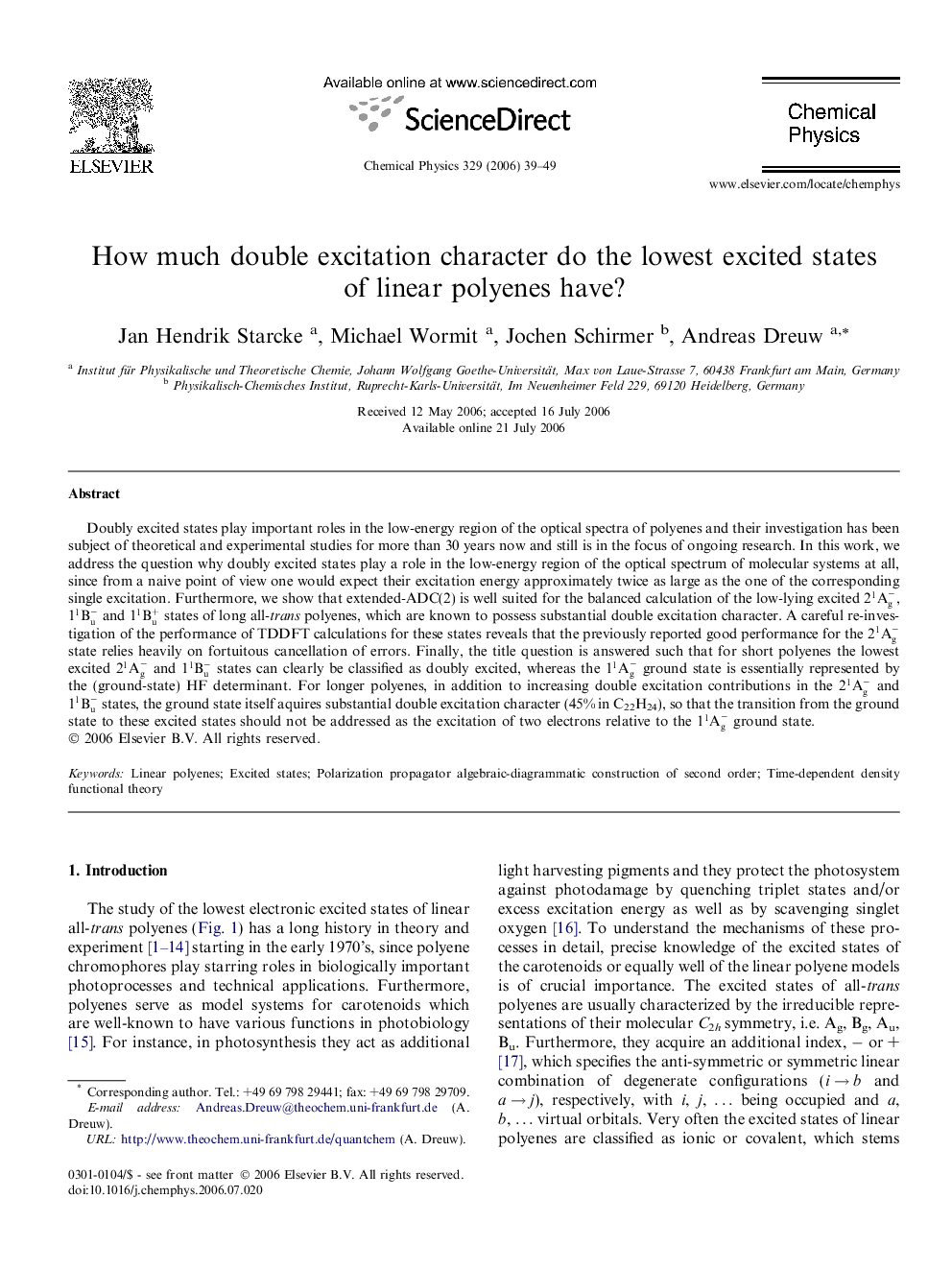| کد مقاله | کد نشریه | سال انتشار | مقاله انگلیسی | نسخه تمام متن |
|---|---|---|---|---|
| 5376787 | 1504330 | 2006 | 11 صفحه PDF | دانلود رایگان |
عنوان انگلیسی مقاله ISI
How much double excitation character do the lowest excited states of linear polyenes have?
دانلود مقاله + سفارش ترجمه
دانلود مقاله ISI انگلیسی
رایگان برای ایرانیان
کلمات کلیدی
موضوعات مرتبط
مهندسی و علوم پایه
شیمی
شیمی تئوریک و عملی
پیش نمایش صفحه اول مقاله

چکیده انگلیسی
Doubly excited states play important roles in the low-energy region of the optical spectra of polyenes and their investigation has been subject of theoretical and experimental studies for more than 30 years now and still is in the focus of ongoing research. In this work, we address the question why doubly excited states play a role in the low-energy region of the optical spectrum of molecular systems at all, since from a naive point of view one would expect their excitation energy approximately twice as large as the one of the corresponding single excitation. Furthermore, we show that extended-ADC(2) is well suited for the balanced calculation of the low-lying excited 21Ag-, 11Bu- and 11Bu+ states of long all-trans polyenes, which are known to possess substantial double excitation character. A careful re-investigation of the performance of TDDFT calculations for these states reveals that the previously reported good performance for the 21Ag- state relies heavily on fortuitous cancellation of errors. Finally, the title question is answered such that for short polyenes the lowest excited 21Ag- and 11Bu- states can clearly be classified as doubly excited, whereas the 11Ag- ground state is essentially represented by the (ground-state) HF determinant. For longer polyenes, in addition to increasing double excitation contributions in the 21Ag- and 11Bu- states, the ground state itself aquires substantial double excitation character (45% in C22H24), so that the transition from the ground state to these excited states should not be addressed as the excitation of two electrons relative to the 11Ag- ground state.
ناشر
Database: Elsevier - ScienceDirect (ساینس دایرکت)
Journal: Chemical Physics - Volume 329, Issues 1â3, 26 October 2006, Pages 39-49
Journal: Chemical Physics - Volume 329, Issues 1â3, 26 October 2006, Pages 39-49
نویسندگان
Jan Hendrik Starcke, Michael Wormit, Jochen Schirmer, Andreas Dreuw,